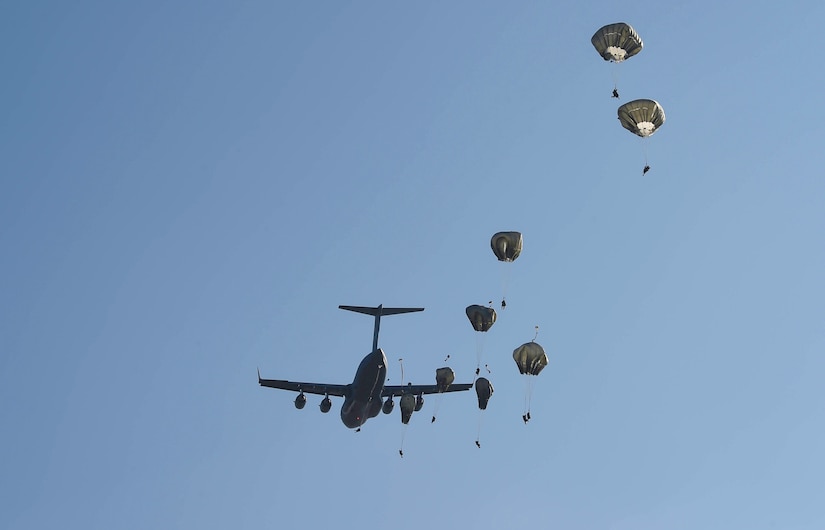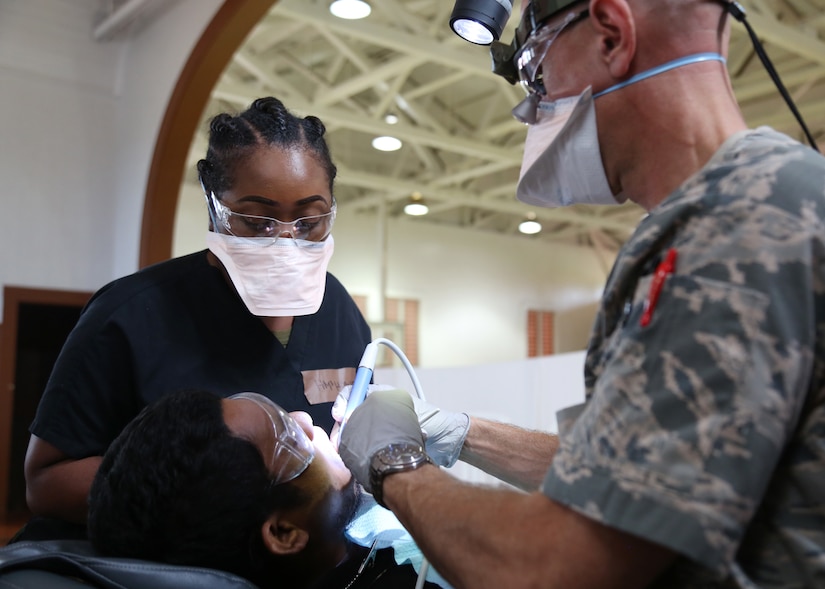By Air Force
Senior Airman Tryphena Mayhugh, 62nd Airlift Wing
JOINT BASE
LEWIS-MCCHORD, Wash. -- Airmen from the
62nd Airlift Wing and soldiers from the Army’s 82nd Airborne Division
participated in a joint exercise to airdrop equipment and personnel at two drop
zones during Exercise Predictable Iron at Fort Bragg, North Carolina’s Pope
Field, from Aug. 20-24.
Airmen from the
7th and 8th Airlift Squadrons crewed two C-17 Globemaster IIIs to carry aloft
more than a thousand Army paratroopers.
“It is crucial
that the Air Force and Army work well together, because without each other the
mission fails,” said Air Force Capt. Jared Barkemeyer, a pilot with the 7th
Airlift Squadron and the aircraft commander for one of the C-17s. “Without the
reliable transport the Air Force provides, the Army could not execute their
objectives in a timely manner via airdrop.
“The airdrop
insertion at a mass scale is something no other nation in the world can
provide,” he added. “But, without the Army, the Air Force would strictly serve
an air-land mission and, as a service, we would become less flexible to user
requests.”
Teamwork
The airmen worked
alongside soldiers to load equipment onto the aircraft and helped jumpmasters
and paratroopers to maintain their readiness requirements for airborne
missions.
“Every jump I’ve
been on, the Air Force has been extremely helpful, accommodating and willing to
work with us,” said Army Maj. Brian Plover, the 2nd Brigade Combat Team’s
operations officer.
A benefit of the
joint exercise was determining where there may be shortfalls and strengthening
those areas to become more efficient or effective.
“It’s important
that the Air Force participate in these events to ensure that we are ready to
do what our nation expects of us, which is to insert the 82nd Airborne anywhere
in the world within a short time frame,” Barkemeyer said. “Also, during these
events we identify shortcomings between the two services and eliminate them in
order to strengthen our joint-force initiative.”
Over the course
of three days, airmen and soldiers dropped 40 tons of equipment, including
armored vehicles and resupply containers, and 1,005 airborne soldiers.
“Working with the
Army was great,” Barkemeyer said. “Inserting hundreds of jumpers into an
objective area tests the crew’s abilities, as well as strengthens our habit
patterns. The 82nd jumpers are some of the toughest service members around and
being able to airdrop them is an honor.
“The exercise was
a total joint success,” he added. “The Army users received all the training
they needed as scheduled, and the 62nd AW provided every lift on time, thanks
to the aircrews as well as the outstanding 62nd AW maintenance support that kept
the aircraft mission ready all week.”
Testing New
Systems
During one of the
personnel airdrops, the Army also practiced a new method of airdropping the
Caster-Assisted A-Series Delivery System, which are wheeled containers of
equipment pushed out the doors of an aircraft.
“It’s pretty much
a door bundle on wheels,” Plover said. “It’s a new thing. Every jump we push
out a CAADS. It holds supplies that are needed immediately, such as water, food
or ammo.”
While the
exercise provided the airmen and soldiers the chance to work together, it also
provided a chance for Air Force crews from different squadrons to work
together.
“I thoroughly
enjoyed participating in this exercise all week,” Barkemeyer said. “Working
with my crew from the 7th [Airlift Squadron], as well as the crew from the 8th
[Airlift Squadron], was awesome. We worked really well as one unit and had fun
doing it.”
Exercise
Predictable Iron allowed airmen and soldiers to strengthen their skill sets
together and work toward a common goal. Exercises such as this help accomplish
the Department of Defense’s mission to provide the combat-credible military
forces needed to deter war and protect U.S. security.









